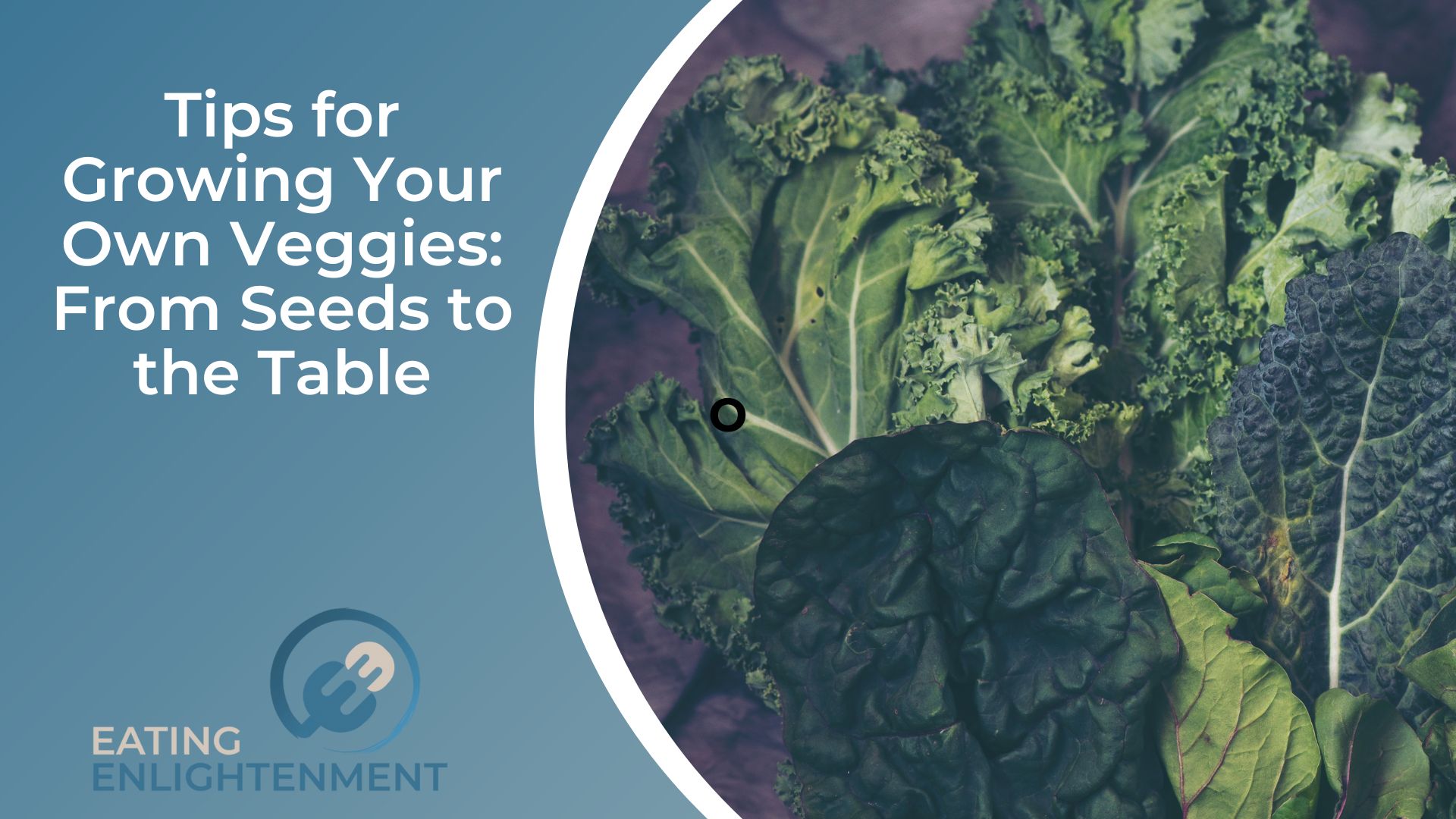Gardening (or taking care of plants) is quite therapeutic and rewarding. There’s nothing quite like the satisfaction of harvesting ripe tomatoes, crisp lettuce, or fragrant herbs just moments before they end up on your plate. Not to mention the incredible flavors that come with homegrown produce!
If thighs go well, you can take control of your own food supply and make sure that the vegetables you consume are free from harmful pesticides and other chemicals.
Overall, if you have a garden or even a small area in your backyard, growing veggies at home is quite easy. You just need to know a few steps and tips to make sure your seeds turn into healthy, bountiful plants. And this is what we’re going to talk about today.

How to Clean Your Veggies Before Eating Them
Before we go into how to grow veggies, let’s talk about how to make sure the ones that reach your plate are healthy and good to eat.
Properly cleaning your veggies before consuming them is essential for maintaining their nutritional value and ensuring food safety. When you grow your own veggies, you have control over how they are grown, but it’s equally important to ensure they are clean and safe to eat.
Washing your vegetables before consumption helps remove dirt, bacteria, pesticides, and other contaminants that may be present on the surface. But if you want to make sure your veggies are free of any pathogens, you may want to consider using electrolyzed water.
Researchers found that the electrolyzed water is efficient in removing pesticide residues in fruits and vegetables. Plus, this type of water can be used to keep your plants safe from harmful bacteria, yeasts, viruses, mold, and other pathogens while still growing.
In summary, thanks to electrolyzed water, you can have clean produce (whether grown in your garden or bought from the market) and healthy plants.
6 Tips to Grow Your Own Veggies
Now, let’s see how to grow your own healthy veggies.
1. Everything Starts with Good Seeds
Choosing quality seeds is the foundation of a successful vegetable garden. Opt for reputable seed suppliers or save seeds from your own healthy, non-hybrid plants (if you’ve already dabbled with growing plants).
If you want to start early (which is recommended), start your seeds indoors. This allows for early cultivation and gives seedlings a head start before transplanting them outside. Alternatively, sowing seeds directly in the garden soil is ideal for vegetables that don’t tolerate transplanting well, such as root crops or certain leafy greens.
2. Prepare Your Soil
To achieve optimal growth, it’s important to create nutrient-rich soil for your vegetables.
Start by clearing the planting area of weeds or debris, especially if you’re wanting a hanging planter for your windows. Once the area is clean and ready to receive your seeds, add organic matter like compost (well-rotted manure also works) to improve soil structure and fertility.
Different vegetables have varying soil requirements, so consider factors like drainage and pH levels when choosing the best spots for each crop.
3. Plan Your Garden Layout
Effective garden planning helps maximize space and light exposure while fostering companion planting relationships between certain vegetables to promote healthier growth and deter pests naturally.
Assess each vegetable’s space requirements and sunlight preferences before determining their placement in the garden. Vertical gardening techniques, such as trellises or stakes, can optimize yields by utilizing vertical space efficiently.
4. Watering and Maintenance
Proper watering is crucial to avoid both overwatering and underwatering your vegetables.
Monitor soil moisture levels regularly by feeling the top inch of the soil. Water when it feels dry but not parched. Mulching around plants helps retain moisture while suppressing weed growth.
Additionally, be vigilant about common pests and diseases that can affect vegetable crops, but rely on organic pest control methods like handpicking insects or using natural sprays if necessary.
5. Harvesting and Preserving
Knowing when to harvest your vegetables ensures peak flavor and maturity levels for optimal taste and nutritional value in your homegrown produce. Pay attention to specific harvest cues for each vegetable, such as size, color, or firmness.
To avoid food waste from surplus produce, consider different preservation methods like freezing, canning, or pickling. These techniques will help you enjoy your homegrown vegetables even beyond their growing season.
6. Enjoy Your Veggies
Veggies are part of a healthy diet, but not everyone enjoys consuming them raw or cooked. So, if you know how important they are for your health, you should check out these tips on how to include more veggies in your daily meals.
Also, look for new recipes and cooking methods to ensure you get the full load of nutrient benefits from the veggies you’ve worked so hard on.
Wrap Up
By following these practical tips for growing your own veggies, you’ll be well on your way to creating a thriving and bountiful garden that brings healthy and delicious delights from seed to table.
Keep in mind that experimentation and adaptation are part of the gardening journey, so don’t be afraid to try new techniques while discovering what works best in your unique garden space.
Happy growing up!



